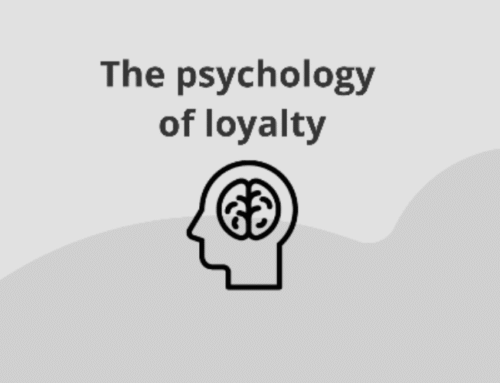Customer Loyalty in the Age of eCommerce: Tips for Multi-Location Businesses
The eCommerce business model is becoming an increasingly lucrative option for companies, with people turning to online shopping for both practical needs and emotional fulfillment. Statistics back this up: global ecommerce sales are expected to total $6.33 trillion worldwide in 2024, growing steadily over the next few years.
Running a business that spans multiple cities (or even countries) is no small feat. You juggle inventory, manage teams across locations, and strive to deliver a consistent brand experience—all while keeping churn rate low and customer retention rate high. But in the age of booming eCommerce, where competition is a click away, customer loyalty takes on a whole new meaning.
So, how do you cultivate that elusive sense of loyalty and drive sales in a world saturated with online options? Here are some tips for multi-location businesses to turn those one-time buyers into repeat customers, no matter where they shop.

The New Loyalty Landscape in the eCommerce Industry
Gone are the days when a simple punch card or a basic points system would suffice. Today’s customers are savvy, connected, and have endless options at their fingertips. They expect more from the brands they choose to support, and are not afraid to switch if their expectations aren’t met.
So, how can multi-location eCommerce businesses combat these challenges and build customer loyalty? Step up your marketing efforts by offering clear, enticing programs seamlessly integrated with the overall shopping experience. Rewards should be easily accessible and tracked.
1. Know Your Target Audience
It all starts with understanding customer expectations. Collecting and analyzing customer data from all your locations and online channels will give you a comprehensive view of your customer’s preferences and behaviors. Use this data to segment your customer base into different groups and tailor your programs to meet the specific needs of each segment.
For example, if you find that your urban locations have a high number of young professionals, you might offer exclusive after-work events or partnerships with local fitness studios. On the other hand, suburban locations might benefit from family-friendly promotions and weekend deals.
2. Create a Unified User Experience
Your customers should feel like they’re interacting with the same brand, no matter which location they visit or whether they’re shopping online. This means your rewards program should be consistent across all touchpoints. A unified system allows customers to earn and redeem points, access rewards, and enjoy benefits no matter where they are.
Invest in a robust loyalty platform that integrates with your point-of-sale systems, eCommerce store, and mobile app. This makes it easy for customers to participate in your programs and provides you with valuable insights into their buying habits and preferences.
3. Personalize Your Approach
Don’t underestimate the power of personalized communication. eCommerce personalization is key to making your customers feel valued and appreciated. Use the data you’ve collected to personalize your communications and offers. Create personalized email campaigns or send push notifications with special offers, birthday rewards, and exclusive access to sales or events.
Remember, marketing personalization goes beyond just using the customer’s name. It’s about showing that you understand their preferences and are willing to go the extra mile to meet their needs. For instance, if a customer frequently buys a particular product, offer them a discount on their next purchase.
4. Leverage Technology
Loyalty programs shouldn’t be confined to your online store. In the age of eCommerce, technology is your best friend. Use it to enhance your customer loyalty program and make it more engaging. Extend them to social media and email marketing for maximum impact. Consider implementing a mobile app that lets customers easily track their points, view rewards, and receive notifications about special offers.
Gamification is another great way to encourage repeat purchases and foster a sense of community among loyal customers. Incorporate elements like challenges, badges, and leaderboards to make your program fun and interactive.
Today’s shoppers are mobile-first. Ensure your program is optimized for smartphones and tablets.
5. Offer Value Beyond Discounts
While discounts and rewards are important, they shouldn’t be the only focus of your program. Think about other ways you can add value for customer satisfaction. This could include exclusive access to events, early access to new products, or a VIP customer service line.
Also, consider incorporating offline elements to solidify the program’s value. You can partner with other local businesses to offer unique customer experiences and benefits. For example, a coffee shop could team up with a nearby bookstore to offer a free book with every purchase over a certain amount. These types of partnerships improve customer engagement and help you build relationships with other businesses in your community.
6. Gather Customer Feedback and Iterate
Finally, don’t be afraid to ask your customers for feedback on your program. Use surveys, focus groups, and social media to gather insights into what’s working and what’s not. Use this feedback to make continuous improvements and keep your program fresh and exciting.
Remember, a successful customer loyalty program is never static. It evolves based on customer needs and preferences, industry trends, and your business goals. Stay flexible and be willing to make changes as needed for an impactful eCommerce customer journey.
Types of eCommerce loyalty programs:
- Tiered loyalty programs
This program rewards customers based on their spending habits. As they climb the tiers, they unlock better benefits like higher point multipliers, exclusive discounts, or even priority customer service. It’s a great way to motivate high-value customers and keep them engaged.
- Points-based programs
The classic points-based program lets customers earn points with every purchase. These points can then be redeemed for rewards like discounts, free products, or exclusive items. It’s a simple and effective way to incentivize repeat purchases and boost customer lifetime value.
- Value-based programs
These programs go beyond just spending. They reward customers for a variety of actions, like leaving reviews, referring friends, or attending events.
- Universal programs
Think of these programs as a loyalty program for everyone. They offer basic benefits to all customers, regardless of their purchase history. This can be a good way to attract new customers and encourage them to try your brand.
- Paid programs
Here, customers pay a subscription fee to access exclusive rewards and benefits. This can be a good option for businesses with high-value products or services, but the value proposition must be clear and enticing.
Goals of an eCommerce loyalty program:
- Building customer loyalty
- Retaining customers
- Enhancing customer conversion rates
- Increasing customer lifetime value
- Driving overall sales
- Profiling customers
- Redefining the customer buying process
- Building trust with unique communities
- Going viral as a business at a low cost
Customer Retention Strategies:
- Personalized experiences
- Product recommendations
- Seamless checkout process
- Abandoned cart recovery marketing strategies
- Customer reviews
- Positive word-of-mouth marketing
- Social proof
- Exceptional customer service and customer support
- Live chat
3 Signs You Need a Loyalty Program
- If you’re consistently processing a decent volume of orders (think 20+ per month), a loyalty program can help you nurture those customer relationships and encourage repeat business.
- Do your customers tend to be budget-conscious? Loyalty programs with rewards like discounts or free shipping can incentivize them to choose you over competitors, especially if your niche is highly price-sensitive.
- Operating in a crowded “red ocean” market with fierce competition? A loyalty program can help you stand out and build stronger customer loyalty, making them less likely to stray to the competition.
Final Thoughts
Effective customer loyalty in the age of eCommerce requires a strategic and thoughtful approach. Well-crafted loyalty programs are an investment in your business’s future. With bLoyal, you can build programs that increase customer retention and boost conversions. Stay tuned for our success stories, you’ll see real-world examples and gain valuable insights to inspire your own loyalty strategies.




